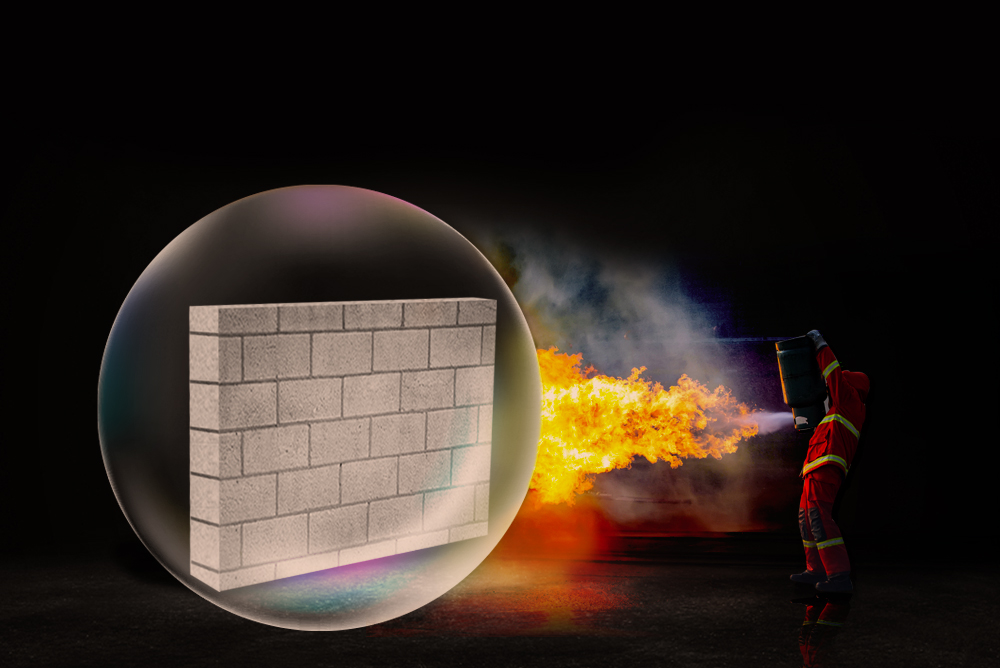Thermal Insulation & Fire Resistance Property of AAC Blocks

AAC blocks or Autoclaved Aerated Concrete blocks are becoming increasingly popular in building construction owing to certain engendered properties that result in far better showing when compared to the performance of burnt clay bricks. In particular, the thermal insulation and fire resistance properties of Genex AAC provide for game changing options in the field of construction.
Owing to their precast, foam concrete nature and its unique, cellular, bee-hive structure, the environment friendly AAC blocks for the construction industry have a very high fire resistance quotient. Whereas burnt clay bricks can hold off fire for approximately 2 hours, AAC blocks can stretch that time to an unassailable 7 hours of defense (depending on block thickness, and owing to the air voids that is characteristic of the block material).
The material in Genex AAC blocks contains small air pockets, and hydrogen is used to foam the concrete, thus giving it an excellent heat insulation property that allows temperatures to be warm in winter and cool in summers. Therefore, it can lower your air-conditioning and heating costs significantly, by about 25%. Measuring the thermal conductivity of AAC blocks vis-à-vis burnt clay bricks, the former logs a K value of 0.16W/mk, while burnt clay bricks are imbued with K value of 0.81W/mk. Genex AAC blocks thus, owing to their low thermal conductivity, keep interiors cool during summers and warm during winters.
The thermal insulation property of AAC blocks offers a tremendous advantage over burnt clay bricks, an advantage that is a potential deal maker in the eyes of people looking to move into new homes, or existing homes looking to refurbish.
